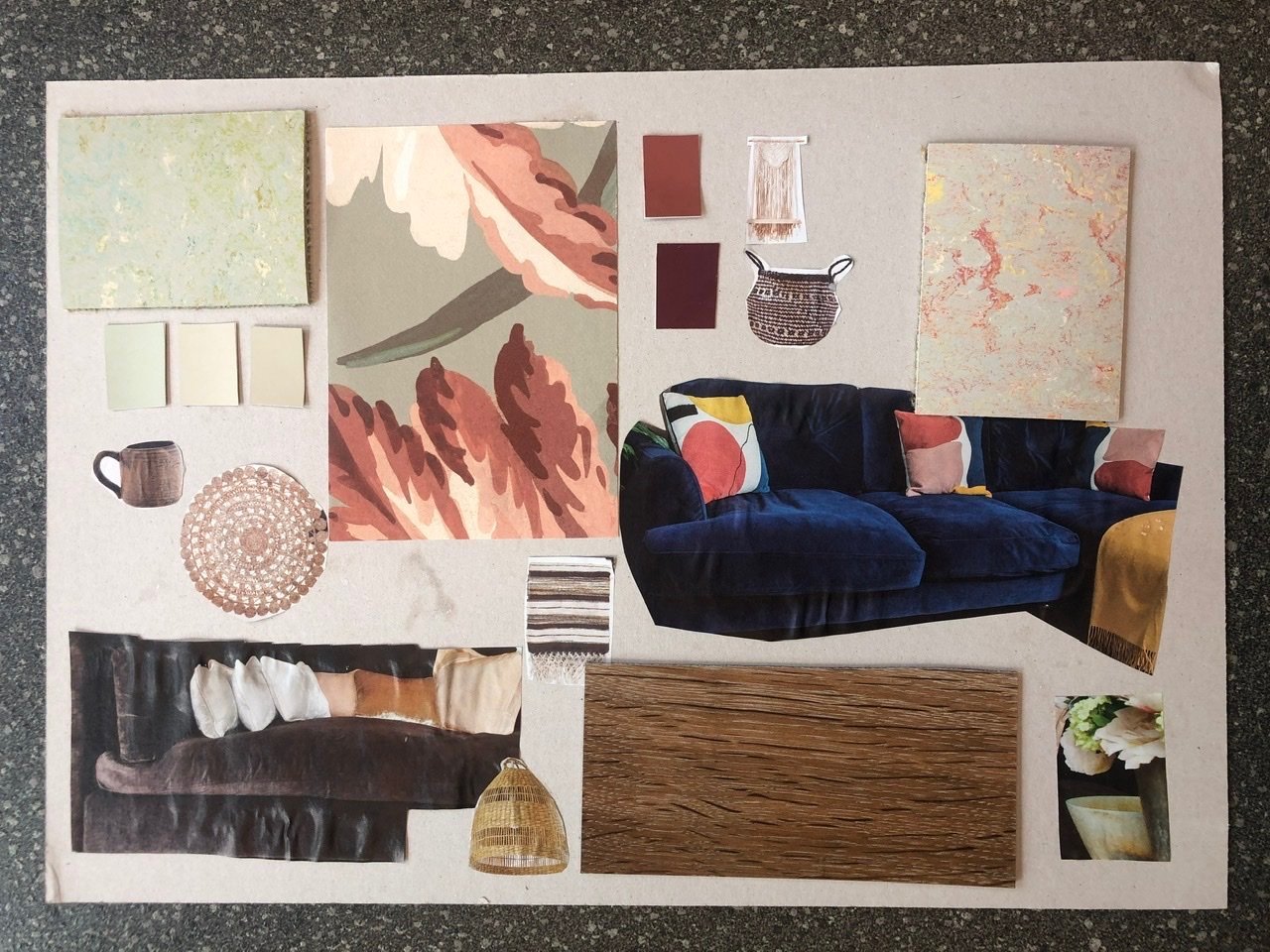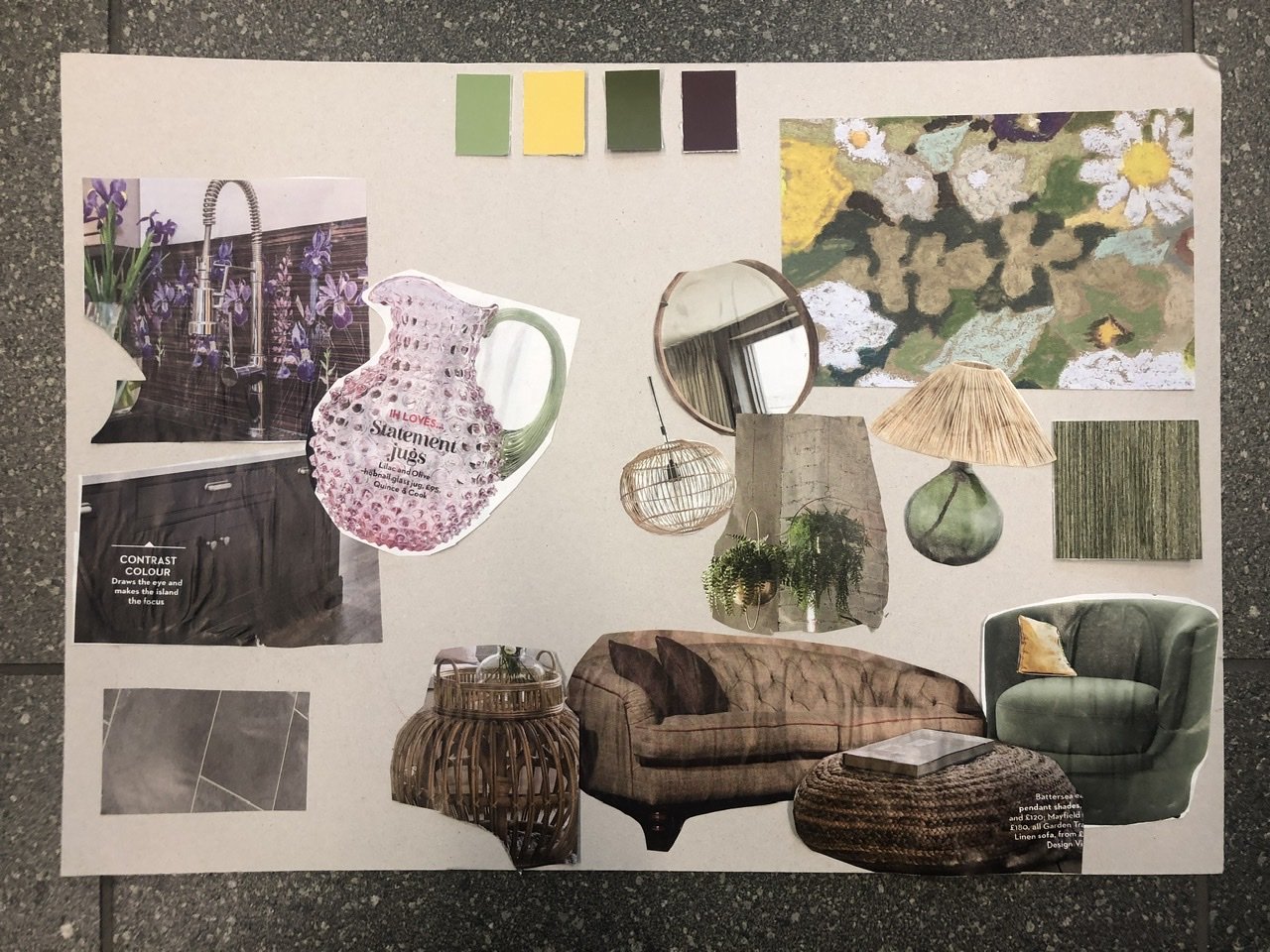Contemporary Elders workshop at Focal Point Gallery
Selection of mood boards created by participants of the workshop (left credit Laura Whiting) and workshop in progress (right credit Kim Davey)
Saturday the 23rd of May was a really fun and creative day! I was invited to host a workshop run in conjunction with the exhibition ‘New Model Village’. In the workshop we explored the creation of a mood board, using the colours, textures and shapes found in the current exhibition as a starting point. The works by Cui Jie draw from research into experimental modernist era factory architecture found in Essex and beyond. The workshop gave an opportunity to consider the imaginary domestic lives of workers and speculate on what might be an aspirational home for them?
The participants were invited as part of a new programme of activities called Contemporary Elders aimed anyone over the age of 60. Contemporary Elders was set up pre-covid to challenge and liberate the term ‘elder’ from the stigma of ‘elderly’ and encourages us to embrace wisdom as a path to growing whole, not old.
The Contemporary Elders programme consists of workshops, guided tours, walks and social meetups to join like-minded elders together to break down barriers, encourage life-long learning and enjoyment of the arts in all its forms.
You can read more about the Contemporary Elders programme here:
https://www.fpg.org.uk/learning/contemporary-elders/







